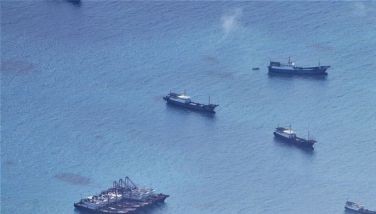‘RP trails neighbors in war vs poverty’
The Philippines lags behind other countries in poverty reduction due to lack of sustained growth over the past 30 years, Australia’s Department of Foreign Affairs and Trade said in a report.
According to
Despite generally favorable human development indicators, the country has not matched its economic potential.
On key economic indicators such as per capita GDP, the report said the Philippines has been gradually overtaken by most of its neighbors – first, Korea and Taiwan, then Thailand, and more recently Indonesia and China.
Another major challenge is the instability in the south, which has impacted on long-term and broad-based development.
A tenuous peace process in
In January 2001, the Philippine government laid out directions for its social, economic and peace agenda through the revised Medium-Term Philippine Development Plan, 2004-2010.
The plan recognizes that little progress will be made in reducing poverty without sustained and broad-based socioeconomic growth to ensure a stable and predictable environment for private sector investment.
The report also said that the number of people living on less than $1 a day increased from 27 million in 1997 to 31 million out of a total population of 76 million in 2000.
The
“Poverty in the
Natural disasters, the risks associated with variable markets, and the persistence of armed conflict in
The
In 2004, Australia revised its approach to development in the Philippines and started implementing a new, four-year country program strategy with three key objectives – improve economic governance in key Philippines ministries to create the environment for broad-based growth, strengthen security and stability through counter-terrorism capacity building and support for the Mindanao peace process, and raise the living standards of the rural poor in the south of the country.
There is provision on the current program that allows expansion of funding for basic education in the south for government and Islamic schools.
Other recent activities include strengthening the capacity of immigration, transport and law enforcement agencies to combat terrorism, and providing additional support to multi-donor and community based activities in support of the
Aside from the current bilateral program, the
In line with the directions of the White Paper on the Australian government’s overseas aid program, the country program strategy for the
- Latest
- Trending





























